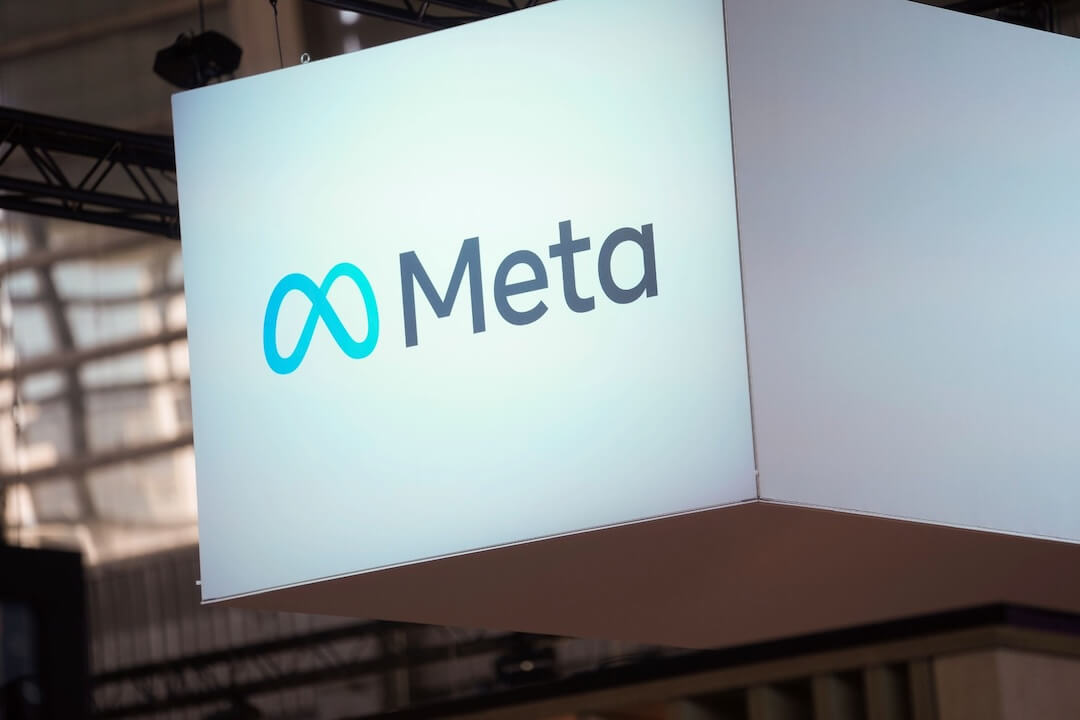
The Morning Meeting with Al Tompkins is a daily Poynter briefing of story ideas worth considering and more timely context for journalists, written by senior faculty Al Tompkins. Sign up here to have it delivered to your inbox every weekday morning.
The U.S. Supreme Court just heard arguments that represent the first significant challenge to the federal protections that websites rely on to defend themselves against lawsuits related to comments posted by users on their sites, including defamation claims.
That protection, which comes from the 1990s-era Section 230 of the Communications Decency Act, contains 26 words:
No provider or user of an interactive computer service shall be treated as the publisher or speaker of any information provided by another information content provider.
News organizations depend on that clause to indemnify themselves against defamation claims if somebody posts a defamatory comment on their website. It does not apply to the content published by news organizations themselves.
The Associated Press put it this way:
If a news site falsely calls you a swindler, you can sue the publisher for libel. But if someone posts that on Facebook, you can’t sue the company — just the person who posted it.
That’s thanks to Section 230 of the 1996 Communications Decency Act.
The case before the court Tuesday was Gonzalez v. Google LLC. At first glance, the suit — which was filed by the family of an American college student who was killed (November 2015) by a terrorist attack in Paris — may not seem to affect journalists. But the suit claims Google is partly responsible for helping terrorists spread their messages and even recruit new followers.
The estate and relatives of Nohemi Gonzalez say Google allowed ISIS to post videos on YouTube, and that YouTube then recommended those videos through an algorithm that identifies videos that are likely to be interesting to a user. Lower courts said YouTube (and its owner Google) are protected by Section 230, but the Supreme Court wants to reconsider that broad protection, which has been in place for most of the history of the wide use of the internet.
On the one hand, if every website was responsible for the wild and hateful stuff that people share, they would have to constantly monitor millions upon millions of posts and read every word before they let users post a single one. It would be untenable. At the same time, there is a growing chorus to do something about hateful, dangerous and untrue content that benefits the poster but also drives traffic to the host company, whether it approves of the content or not.
A similar case, styled Twitter v. Taamneh, goes before the court today. PBS explains the case:
While Gonzalez was murdered in Paris, Nawras Alassaf, Sierra Clayborn, Tim Nguyen and Nicholas Thalasinos were killed in separate terrorist attacks by IS in Istanbul and San Bernardino, California.
The families also sued Google, Twitter and Facebook under the Antiterrorism Act. They claimed that those platforms — by hosting and recommending ISIS (IS) content, particularly its use as recruitment, fundraising and communications — “knowingly provided substantial assistance” under the act and “aided and abetted” an act of international terrorism.
The relatives’ claims were dismissed without the trial court relying on Section 230. The Ninth Circuit again affirmed the dismissals, but with one exception. The appellate court said the family of Nawras Alassaf had plausibly stated an aiding-and-abetting claim that should be reconsidered by the trial court. Twitter, joined by the other two platforms, then asked the Supreme Court to review that decision.
The Supreme Court accepted the case with this central question as the focus for a decision:
“Does section 230(c)(l) immunize interactive computer services when they make targeted recommendations of information provided by another information content provider, or only limit the liability of interactive computer services when they engage in traditional editorial functions (such as deciding whether to display or withdraw) with regard to such information?”
When is a ‘recommendation’ an ‘endorsement?’
Is there a difference between the protections provided by Section 230 and instances when YouTube, for example, points users toward content that it calculates they might want to see based on what they have watched? Is that a reference, a recommendation or an endorsement?
YouTube’s attorney, Lisa Blatt, told the justices that making recommendations for what might interest a user is not the same as aiding and abetting the person or group that posted the content.
Some justices don’t seem to agree. Justice Clarence Thomas has been the most vocally interested in exploring Section 230 protections and implied that it is difficult to tell the difference between an internet site offering a “recommendation” versus an “endorsement.”
U.S. Deputy Solicitor General Malcolm Stewart compared the protections of Section 230 to a hypothetical customer walking into a bookstore and asking for a book about baseball legend Roger Maris and the clerk directing the customer to a table where the book is located. Stewart said the act of directing the customer toward the book is not the same as endorsing the content of the book.
How important is this decision to you? The Broadcasting & Cable website says:
“The Supreme Court’s decision in this case will determine not only the future of Section 230 but the future of the modern Internet,” senior policy analyst Ashley Johnson said. “Significantly weakening Section 230’s liability shield will change the way many online services operate, to the detriment of consumers and free expression online.”
As the justices heard the arguments, the most common themes were that Congress should update Section 230, which took effect before search engines used the algorithms that they use now to push content. “This was a pre-algorithm statute,” Justice Kagan said. “And, you know, everybody is trying their best to figure out how this statute applies, (how) the statute which was a pre-algorithm statute applies in a post-algorithm world.”
Kagan reflected on the general confusion that echoed through the hearing: “I mean, we’re a court. We really don’t know about these things. You know, these are not like the nine greatest experts on the internet.”
Go deeper:
- What is Section 230 and why does it matter? (Electronic Frontier Foundation)
- The Department of Justice’s review of Section 230
- A Legal analysis of Section 230 (Cornell Law School)
- Why did Congress create Section 230? (The Associated Press)
Natural gas prices plunge
Since I mentioned natural gas prices when they spiked, here is a note that they have gone down to prices we have not seen since 2020. Just yesterday, in a single day, prices dropped 10%.
US natural gas prices fell as much as 10% to a low of $2.06 per million BTUs on Tuesday, representing a decline of 79% from its August high.
Russia’s invasion of Ukraine nearly one year ago had sparked a surge in natural gas prices and other commodities as it became apparent that Europe would have to eventually stop buying from Russia and find other sources amid an onslaught of economic sanctions.
To prepare, Europe built up its reserves of the fuel to prepare for a potentially dire winter scenario in which cold weather would spark strong demand and lead to dwindling supplies and a price surge.
But an unusually mild winter has helped Europe avoid those fears, as demand for the commodity did not prove to be as strong as it would be during a particularly cold and prolonged winter.
Natural gas is the main source of energy behind U.S. electricity generation. So, the price of gas has a direct impact on your electric bill.
Message to journalists: Propane and natural gas are different
The propane industry wants journalists to stop lumping it in with the bad publicity that the natural gas people are enduring these days. The Chester Telegraph points out that propane is an ingredient of natural gas. The story contains this passage that I think is interesting:
“Propane is produced through a separation technique called fractional distillation,” says Dr. Frankie Wood-Black, Division Chair, Engineering, Physical Science and Process Technology at Northern Oklahoma College. That’s a process in which propane is removed from the other components like methane. Propane is thus called a “fraction” of natural gas and is a purer form of fuel that has fewer of the contaminates of natural gas.
New rule would make it easier for grandparents and kin to foster children
Families are complicated. Sometimes grandparents and other relatives must step in to take over the care of children when their parent(s) cannot. But federal and state regulations can legally complicate who can foster a child.
When a grandparent, for example, becomes a foster parent, the state retains legal custody and pays for the child’s care. Sometimes, grandparents get custody of a child but do not have the same support from the state as non-kin foster parents would.
The federal Administration for Children and Families explains the proposed rule:
Currently, all foster family homes must meet the same licensing standards, regardless of whether the foster family home is a kin or non-kin placement. This updated regulation allows a child welfare agency to adopt different licensing standards for all kin foster family homes to lessen delays in the kinship foster family licensing process. Kin can include individuals related to a child by blood, marriage, or adoption and other individuals who have an emotionally significant relationship with the child, such as godparents, and close family friends.
ACF’s Children’s Bureau encourages child welfare agencies to strongly consider developing standards for kin foster family homes that meet only the federal requirements and not additional standards the state, local, or tribal agency may require non-relative foster family homes to meet. These standards may include extending the age limits for kinship foster care providers to allow for older kin to foster a child or allowing kin children to share sleeping spaces.
Research shows that children living with family experience higher stability and fewer behavioral problems compared to children living with non-relatives in foster care, in addition to maintaining familial and cultural bonds. ACF believes that child welfare agencies can develop different foster family home licensing or approval standards for kin in a manner that does not compromise child safety and well-being. This regulation also does not change the requirements concerning criminal background checks or other important safety provisions.
About thirty percent of all children in foster care in the United States are currently placed with relative foster parents. For many years, child welfare agencies largely overlooked relatives as resources for the foster care of children who had been abused or neglected.
Kiplinger gives us a peek at how big this issue is:
Roughly 2.5 million grandparents were responsible for raising grandchildren as of 2019, according to the Census Bureau. Experts believe the true number is higher because many grandparents take in their grandchildren unofficially. These grandparents are often reluctant to become official foster parents or push for guardianship because they believe the arrangement will be temporary, says Ana Beltran, co-director of the National Center on Grandfamilies.
Financial assistance, though, is limited and hard for grandparents who are caregivers to get, she adds. “It can be difficult for them to apply for benefits from programs that were not created [for] relatives serving as primary caregivers.”
Go deeper: Here is a searchable, easy-to-use database that helps you explore foster care grandparenting laws and pending bills in every state.
Grandfamilies.org explains why it is important for extended families to be able to gain foster care status more easily:
- Children in relative foster care tend to be just as safe as or safer than children placed with non-relative foster families. Data indicates that foster children living with relatives experience abuse or neglect at lower rates than children placed with unrelated foster families.
- Relative foster placements tend to be more stable than placements with unrelated foster families. Children placed with relatives generally have fewer moves while in foster care.
- Siblings are less likely to be separated when placed in relative foster care. Siblings are more likely to remain together while in foster care when placed with relatives than when placed with non-relatives.
- Children in relative foster care maintain community connections. Children placed with relatives are more likely to remain within their own neighborhoods and continue in their original schools than children who are placed with unrelated foster families.
- Relatives are frequently willing to adopt or become permanent guardians when reunification is not possible. Experience across the country has demonstrated that many relatives are willing to adopt or become permanent guardians to their kin when not forced to give up critical financial assistance in order to do so.








